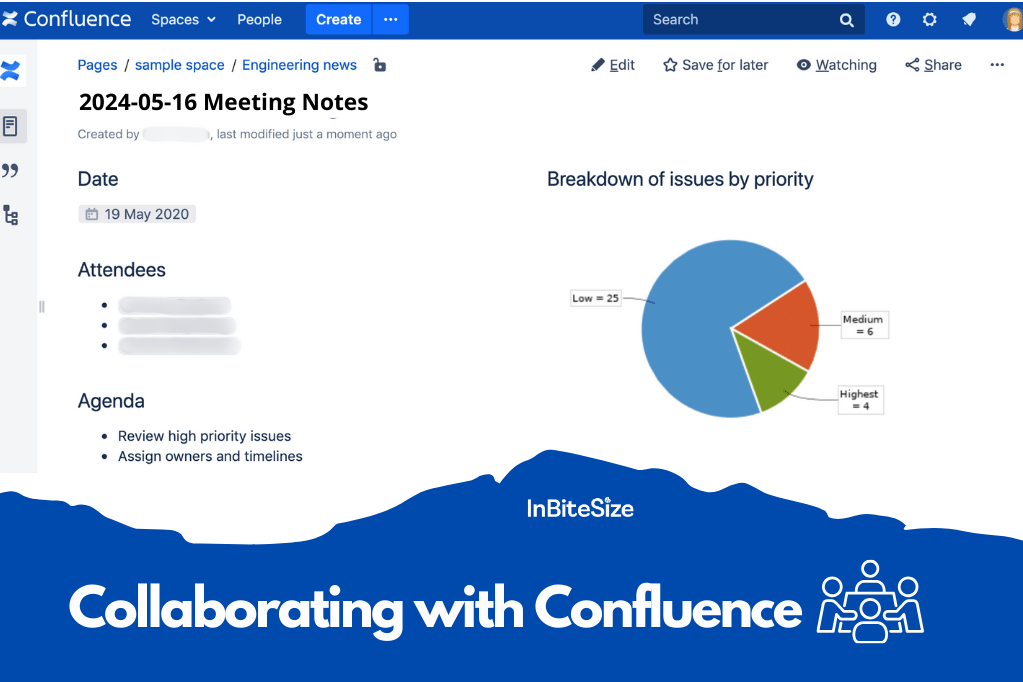Having the right amount of documentation is an art. Often a team either has too little or too much of it. Either way, each scenario decreases the effectiveness of a team because team members are either waiting for someone to validate their work or sifting through mounds of READMEs, files, and folders searching for answers.
In today’s blog, we’ll be talking about Atlassian’s Confluence, and we’ll be sharing how we leverage some of its capabilities to:
- Simplify team processes
- Engage with our stakeholders, and
- Enable asynchronous communication
What is Confluence
Are you a fan of Wikipedia? Then, you can think of Confluence as an organization’s internal wiki where folks can share a plethora of information. In Atlassian’s words, Confluence’s tagline is “create, share, and harness knowledge across teams” by breaking down silos and harnessing the power of teamwork.
In simpler terms, Confluence is made up of spaces and pages, which are protected by permissions. A space is a container to hold the pages and other bits of content relating to a particular purpose. For example, we have a space for our team and another for our department. I also have another space where I share agile knowledge with folks all across my organization. Each of these spaces have different types of content and cater to a different audience.
Pages are like the articles of this blog or the various topics you come across when you're clicking through Wikipedia. They come blank like a Google Doc or a new Microsoft Word document. From there, you fill the page with information given your intent. For example, we have pages that describe our team and our goals. Beyond that, we have pages to document our use cases and customer personas and capture our meetings’ actions and decisions. The world is your oyster. You can leverage Confluence based on your use cases.
On top of all these are permissions that you and/or an admin can set to protect sensitive items. If you’d like a crash course in Confluence, check out their Atlassian University. They’ll do a better job describing their product that us!
Now that you’ve learned more about Confluence, we’ll share one of the many ways we use it to strengthen collaboration across our teams.
Simplify your team processes
In my world, we often have processes that are repeatable and followed by all members of our teams. To ensure we operate as effectively and efficiently as possible, our team creates SOPs, runbooks, and meeting agendas. Each of these artifacts has its own template that we customized to fit our team’s needs. Templates help ensure we capture the right information each time. Because these artifacts have a consistent format, it’s easy for us to search for content, too. For example, if I’m looking for actions from a meeting, I know that I can look at the top of the page to find the content. As a bonus, Confluence has tons of templates that come out of the box.
Something else we use to simplify our processes are tags. Think of tags as hashtags on Instagram posts. In our case, we use tags to tie together similar content that may be organized under different parts of our navigation tree. For example, we have a tag for meetings and another tag for our knowledge articles. If we’re struggling to find a page, we can always click on a tag to find all articles related to that content.
Engage with your stakeholders
Along with aligning our team, we also leverage Confluence to engage with our stakeholders. The two features that we use are blogs and calendars. For example, we use blogs to send release notifications to our customers at the end of every sprint. The way blogs work is that they automatically follow a sort order by date in the navigation tree. Therefore, our customers know to look at the top blog post to find the latest feature releases, limitations, and issues that are occurring.
Calendars work similar to Microsoft Outlook or Google Calendar. In our calendar, we highlight key company holidays, code freezes, and release dates. Each of these categories have their own color scheme. Therefore, our customers can sort through the information that is pertinent to them and make adjustments as needed.
Enable asynchronous communication
No one has ever said that he or she would like more meetings. To support asynchronous communication, we use the comment function. With some of the features listed above (e.g. calendars and pages), folks can actively comment inline or in the comment sections of each article.
I have a global team that works with groups all across the company. For our architecture security reviews, we actively use the comment function to highlight gaps. For example, a USA-based security analyst may ask a question about connectivity. Overnight, a UK-based engineer, can review the comment and provide details. If more detail is needed, we can always meet. However, most times we can resolve issues before ever having to send a meeting invite!
A note about the alternatives
If your organization does not have licenses to use Confluence, there are many other tools on the market, such as Microsoft’s OneNote and Google Docs. Each has its own sets of pros and cons, which we’ll write about another day!
Remember, tools are not the answers to your problems. Rather, they are the stepping stones that support you and your teams on your journey to greatness. To get started, think about the challenges you and/or your stakeholders are facing and then, shape your tooling to address those gaps.
Be sure to comment below and share how your teams are using tools to elevate their experience.
Looking for other ways to increase collaboration on your teams? Check out our other articles, including Microsoft Whiteboard: The Secret Powerhouse and Collaborate with Mural.
